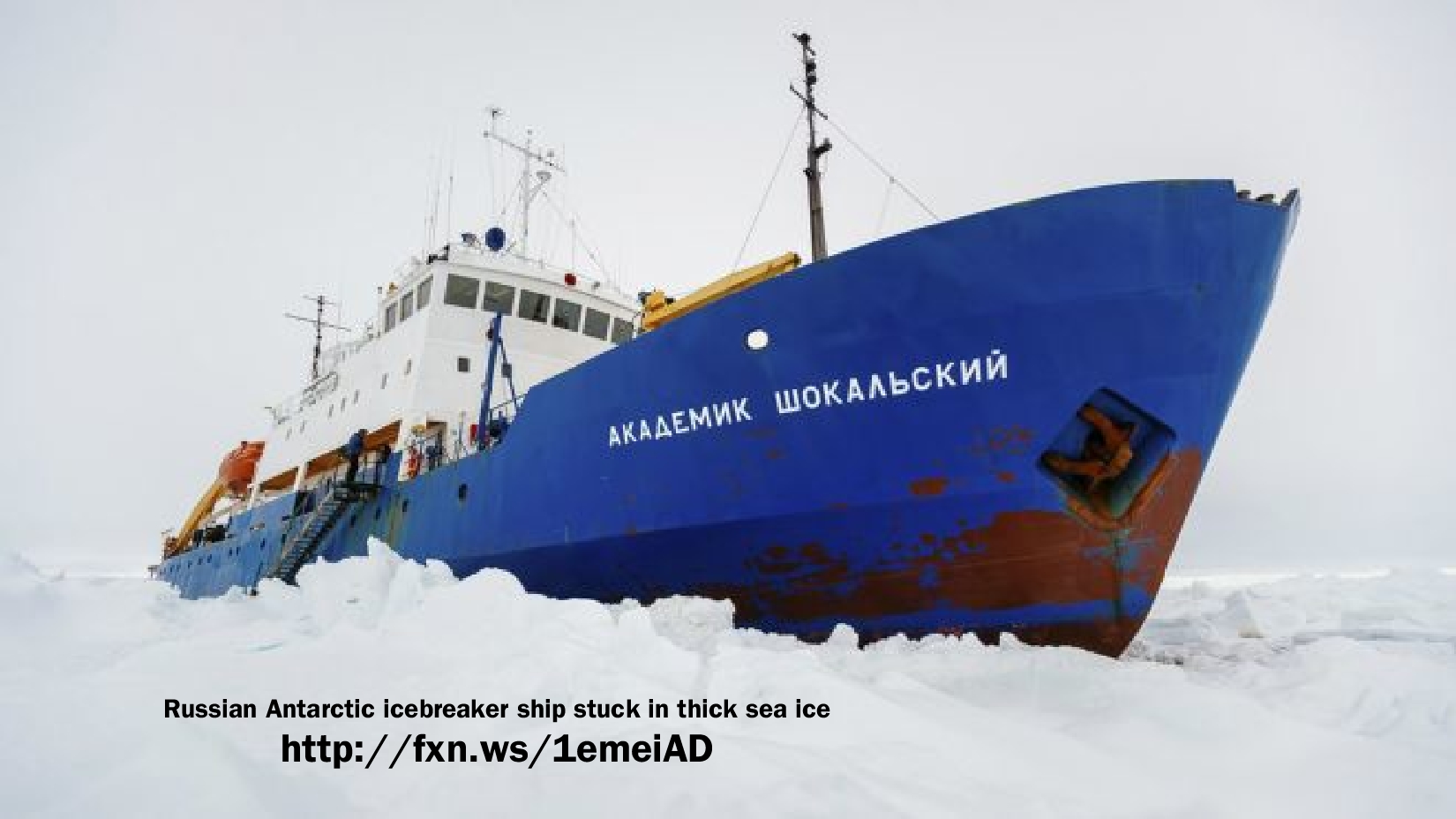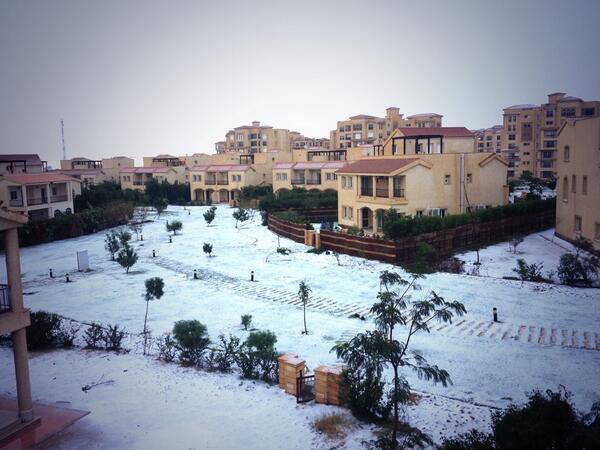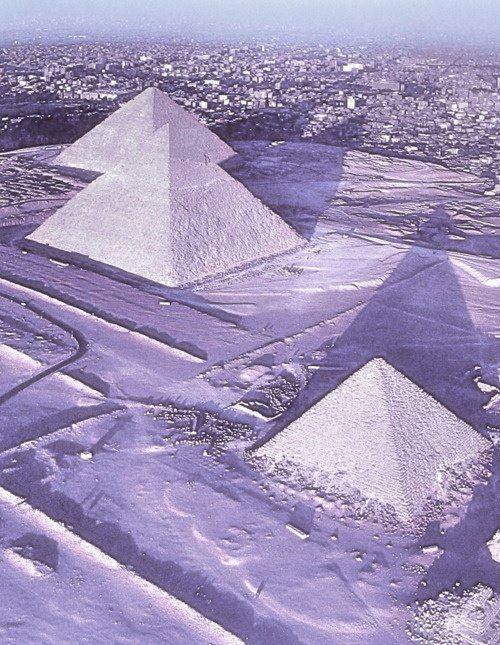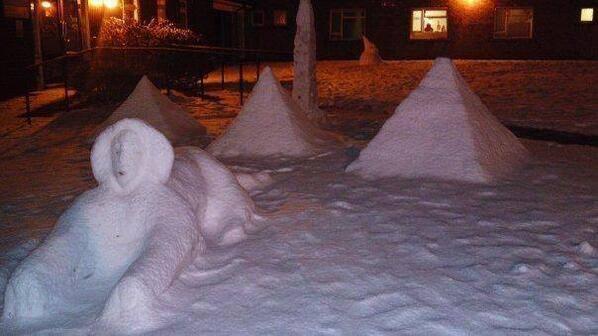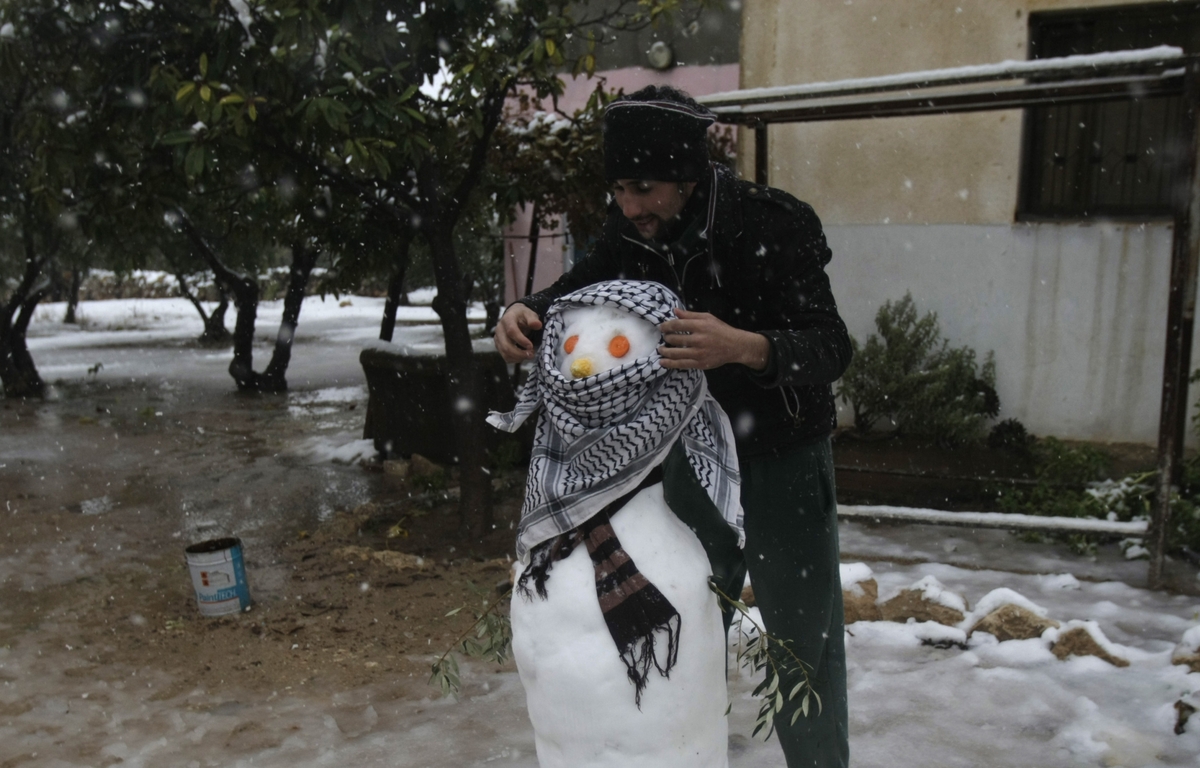TELEGRAPH.CO.UK
Jan. 3, 2014
Another Antarctic ship now stuck in ice
The Chinese icebreaker which helped rescue passengers away from a stranded Antarctic ship has itself become stuck in ice.

A ship which was used to rescue by helicopter 52 people from a trapped Antarctic ship has now found itself in need of rescue after it got stuck in heavy ice.
Having not moved for several days while preparing to airlift the passengers, the Chinese-owned Snow Dragon is now wedged in ice.
The ship was used as a launch pad to pick up the passengers on Thursday, after they had spent nine days stranded. Their ship, the Akademik Shokalskiy, became wedged in ice on Christmas Eve as it was heading towards Antarctica.

After a lengthy operation to ferry passengers from the Akademik Shokalskiy to the awaiting Australian ship, the Aurora Austrialis, by helicopter, the Snow Dragon was due to leave the area.
But less than 24 hours later, it too was stuck in ice.
“It will attempt to maneuverer through the ice when tidal conditions are most suitable, during the early hours of 4 January 2014,” said a statement from the Australian Maritime Safety Authority, AMSA.
‘Stuck in our own experiment’: Leader of trapped team insists polar ice is melting
By Paul Tilsley
The leader of a scientific expedition whose ship remains stranded in Antarctic ice says the team, which set out to prove climate change, is “stuck in our own experiment.”
“Sea ice is disappearing due to climate change, but here ice is building up,” the Australasian Antarctic Expedition said in a statement.
But the situation has global warming skeptics poking fun at the scientists.
“Cute how these Warmists who hate fossil fuels take a trip to the Antarctic to show just how horrible fossil-fueled climate change is, then need rescue from their fossil-fueled trip by other fossil-fueled ships and helicopters, which still can’t rescue them,” wrote one blogger on Pirate’s Cove .
.
The website Newsbusters said much of the media has bent over backward to avoid linking the ship’s current fate with its mission.
said much of the media has bent over backward to avoid linking the ship’s current fate with its mission.
“Somewhere far, far to the south where it is summer, a group of global warming scientists are trapped in the Antarctic ice,” read a post on the site. “If you missed the irony of that situation, it is because much of the mainstream media has glossed over that rather inconvenient bit of hilarity.”
So far, ice breakers have been unable to get closer than 10 miles from the stranded ship, which is surrounded by ice up to 10 feet thick. Stuck since Christmas Eve, it is about 100 nautical miles east of the French base Dumont D’Urville, and about 1,500 nautical miles south of Brisbane.
The best scenario for the scientists, agrees Turney, would be that the Aurora would be able to make a path through the ice, and somehow assist the Akademik Shokalskiy’s crew to turn their vessel around – not the easiest task when hemmed in by solid pack ice – so that it could follow the Australian icebreaker back into the safety of open water, and all the expedition’s passengers could stay comfortably on board.
But indications are that the 74 will have to be evacuated. A helicopter from a nearby Chinese ship is standing by to land on the ice next to the stranded ship and transfer the team, sources say, probably to the Aurora.
Here’s how the Daily Mail reports on it:
They went in search evidence of the world’s melting ice caps, but instead a team of climate scientists have been forced to abandon their mission … because the Antarctic ice is thicker than usual at this time of year.
The scientists have been stuck aboard the stricken MV Akademik Schokalskiy since Christmas Day, with repeated sea rescue attempts being abandoned as icebreaking ships failed to reach them.
Now that effort has been ditched, with experts admitting the ice is just too thick. Instead the crew have built an icy helipad, with plans afoot to rescue the 74-strong team by helicopter.
The expedition is being lead by Chris Turney, a climate scientist, who was hoping to reach the base camp of Douglas Mawson, one of the most famous Antarctic explorers, and repeat observations done by him in 1912 to see what impact climate change had made.
It is thought that the group, which includes scientific researchers and a journalist, will now be able to escape by air after two sea rescues failed.
Australian icebreaker Aurora Australis was unable to reach them because it was not strong enough to break through. A top-of-the-range Chinese icebreaker, the Snow Dragon (‘Xue Long’), was deployed earlier in the week, and hoped to reach the ship by Saturday. However just after midnight on Friday it too got stuck just six nautical miles from the ship.
… Blizzards could hamper the rescue mission, but the ship is well-stocked and the scientists are continuing their research on the snow around them But on Friday the heavy winds became too great, and built up an impenetrable pile of snow.
They are also continuing their research while stranded by testing the temperature of the surrounding ice sheets. A spokesman for Australia’s Maritime Safety Authority told Australia’s Associated Press: ‘It is quite a remote part of the world, but we have everyone safe. The vessel isn’t in any immediate danger.’
The spokesman said the ship was visiting a number of sites along the edge of Antarctica. One has managed to send a tweet. Chris Turney, of the Australasian Antarctic Expedition, wrote: ‘Heavy ice. Beautiful; light wind. Only -1degC. All well. Merry Xmas everyone from AAE.’
Note this last point. “Only 1degC.” These people just don’t give up! If we are reading this tweet correctly, Turney is commenting on the mildness of the weather while sitting amidst thicker-than-expected ice flows that have already captured his ship …
This is typical of dominant social themes and their believers. Those who adopt dominant social themes usually know they are suspect in our view but likely do it anyway for purposes of professional advancement, enrichment, social status and more.
Being a proponent of a dominant social theme can be a lucrative exercise, indeed. Also, there is a built-in old boy’s network to take care of you. At the top, it is all lubricated by bankers’ money derived from evident control over central banking.
The torrents of money produced by such banking has been used to bankroll an increased level of globalism and globalist enterprises. It is predicated at least in part on fear-based promotions, scarcity memes intended to panic individuals into giving up power and wealth to specially prepared globalist institutions like the UN, IMF, World Bank, etc.
Global warming is a basic dominant social theme of the elite, in that it is a promotion on which others are predicated. Global warming, climate change, etc., is intended to provide the justification for such oddities as smart meters and carbon capture. Basically, this theme gives rise to a vast panorama of authoritarian legislation and Draconian enforcement.
Once the idea of manmade global warming/climate change is accepted, the ramifications are endless. Almost any law can be justified under the idea that the planet itself is at risk due to human behavior. And almost behavior-altering tax or fine can be justified as well.
Popular acceptance of global warming is a prelude to the application of deep fascism. The meme promotes the endlessly dominant state. No wonder the elites are so keen on establishing it even though “it” doesn’t exist.
Still, they proceed with their endless UN conferences, presentations of meaningless papers, fiddled statistics, endlessly repeated falsehoods that travel around the world and show clearly the nature and content of the cooperative ecosystem.
Lying liars lie. And now, finally, they are on the cusp of their biggest caper. Having built up stock markets, especially the US stock market, to empyrean highs via propaganda and legislation, they have managed to jam the IPO pipeline with various kinds of “green” solutions, often partaking of the global warming promotion.
They are making a final push as part of the Wall Street Party we’ve diagnosed to fund a slew of warmist industries and facilities with the public’s money. Presumably, this sort of funding adds credibility to what is being created.
If it can somehow be seen that the market process itself created various forms of green technology, then presumably their credibility is enhanced. Which leads us to a final point: There is money to be made with this meme and those who are cynical enough (or idealistic enough) to subscribe to it may gain revenue via professional or investment participation.
For many, however, there may be moral issues that preclude participation. This is an egregious elite meme with numerous authoritarian ramifications. But some will always continue to help elite forces promote it for a variety of reasons.
Conclusion
One could certainly say that global warmists are trapped amidst contradictory evidence. They are frozen in a sea of denial.
Forget global warming!? Earth undergoing global COOLING since 2002!
Growing number of scientists are predicting global cooling: Russia’s Pulkovo Observatory: ‘We could be in for a cooling period that lasts 200-250 years’
‘Sun Sleeps’: Danish Solar Scientist Svensmark declares ‘global warming has stopped and a cooling is beginning…enjoy global warming while it lasts’
Prominent geologist Dr. Don Easterbrook warns ‘global COOLING is almost a slam dunk’ for up to 30 years or more
Australian Astronomical Society warns of global COOLING as Sun’s activity ‘significantly diminishes’
(READ ENTIRE ARTICLE)
———————————————————
Snow Falls In Cairo For The First Time In More Than 100 Years
Cairo has been transformed into a winter wonderland after a “historic” storm in the Middle East brought a rare treat to Egypt’s capital Friday: a blanket of powdery, white snow.
Due to Cairo’s low rate of precipitation and typically above-freezing winter temperatures, snow is an exceptionally unusual weather phenomenon for the North African city. So unusual, in fact, that the Los Angeles Times, citing local news reports, writes that the last recorded snowfall in Cairo was more than 100 years ago.
Ali Abdelazim, an official at the city’s meteorological centre, confirmed to the Agence France-Presse this is the “first time in very many years” that snow has fallen in the Cairo area.
Excited Egytians took to social media Friday to share photographs of the unusual meteorological event.
Though the snow brought delight to many Cairo residents, the winter storm — dubbed “Alexa” — proved to be bad news for some neighbors.
Alexa brought more misery to thousands of Syrian refugees living in the region, many of whom were unprepared for the cold, brutal conditions.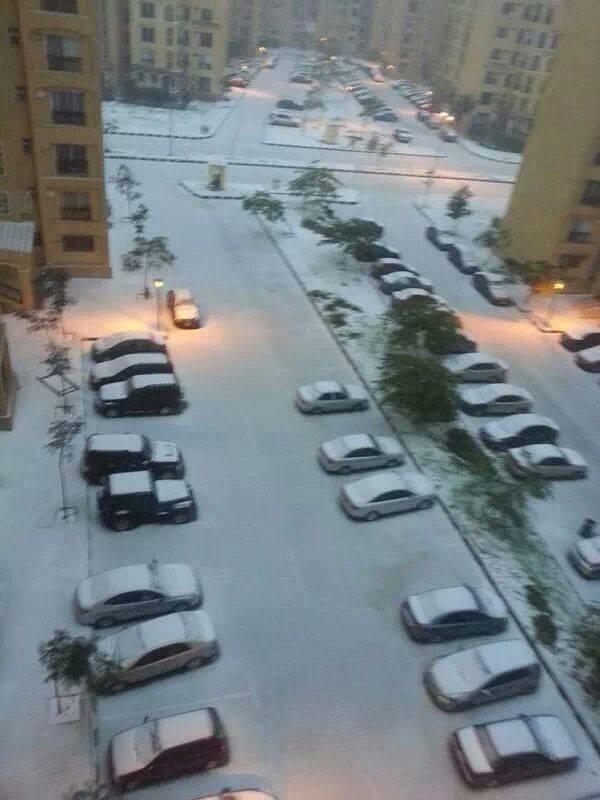
In Israel, where the storm reportedly brought the heaviest December snowfall since 1953, roads had to be closed and thousands were left without power from the inclement weather.
____________________________________
Sun Headed Into Hibernation, Solar Studies Predict
Sunspots may disappear altogether in next cycle.
June 14, 2011
Enjoy our stormy sun while it lasts. When our star drops out of its latest sunspot activity cycle, the sun is most likely going into hibernation, scientists announced today.
Three independent studies of the sun’s insides, surface, and upper atmosphere all predict that the next solar cycle will be significantly delayed—if it happens at all. Normally, the next cycle would be expected to start roughly around 2020.
The combined data indicate that we may soon be headed into what’s known as a grand minimum, a period of unusually low solar activity.
The predicted solar “sleep” is being compared to the last grand minimum on record, which occurred between 1645 and 1715.
Known as the Maunder Minimum, the roughly 70-year period coincided with the coldest spell of the Little Ice Age, when European canals regularly froze solid and Alpine glaciers encroached on mountain villages.
Sunspots Losing Strength
(ed.- This site –SUNSPOTS– offers a wealth of information on sunspots and their effects on Earth)
Sunspots are cool, dark blemishes visible on the sun’s surface that indicate regions of intense magnetic activity.
For centuries scientists have been using sunspots—some of which can be wider than Earth—to track the sun’s magnetic highs and lows.
(See the sharpest pictures yet of sunspots snapped in visible light.)
For instance, 17th-century astronomers Galileo Galilei and Giovanni Cassini separately tracked sunspots and noticed a lack of activity during the Maunder Minimum.
In the 1800s scientists recognized that sunspots come and go on a regular cycle that lasts about 11 years. We’re now in Solar Cycle 24, heading for a maximum in the sun’s activity sometime in 2013.
Recently, the National Solar Observatory‘s Matt Penn and colleagues analyzed more than 13 years of sunspot data collected at the McMath-Pierce Telescope at Kitt Peak, Arizona.
They noticed a long-term trend of sunspot weakening, and if the trend continues, the sun’s magnetic field won’t be strong enough to produce sunspots during Solar Cycle 25, Penn and colleagues predict.
“The dark spots are getting brighter,” Penn said today during a press briefing. Based on their data, the team predicts that, by the time it’s over, the current solar cycle will have been “half as strong as Cycle 23, and the next cycle may have no sunspots at all.”
According to Hill, their data suggest that the start of Solar Cycle 25 may be delayed until 2022—about two years late—or the cycle may simply not happen.
We could be headed toward a very weak solar maximum in 2013—and it may delay or even prevent the start of the next solar cycle.
“Right now we have so many sun-watching satellites and advanced ground-based observatories ready to spring into action,” Pesnell said. “If the sun is going to do something different, this is a great time for it to happen.”
———————————————————————–
Sun Oddly Quiet — Hints at Next “Little Ice Age”?
for National Geographic News
A prolonged lull in solar activity has astrophysicists glued to their telescopes waiting to see what the sun will do next—and how Earth’s climate might respond.
The sun is the least active it’s been in decades and the dimmest in a hundred years. The lull is causing some scientists to recall the Little Ice Age, an unusual cold spell in Europe and North America, which lasted from about 1300 to 1850.
The coldest period of the Little Ice Age, between 1645 and 1715, has been linked to a deep dip in solar storms known as the Maunder Minimum.
During that time, access to Greenland was largely cut off by ice, and canals in Holland routinely froze solid. Glaciers in the Alps engulfed whole villages, and sea ice increased so much that no open water flowed around Iceland in the year 1695.
But researchers are on guard against their concerns about a new cold snap being misinterpreted.
“[Global warming] skeptics tend to leap forward,” said Mike Lockwood, a solar terrestrial physicist at the University of Southampton in the U.K. (Get the facts about global warming.)
He and other researchers are therefore engaged in what they call “preemptive denial” of a solar minimum leading to global cooling.
_______________________________________________________________________________

